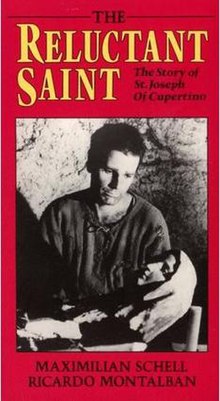
1589 (MDLXXXIX) was a common year starting on Sunday of the Gregorian calendar and a common year starting on Wednesday of the Julian calendar, the 1589th year of the Common Era (CE) and Anno Domini (AD) designations, the 589th year of the 2nd millennium, the 89th year of the 16th century, and the 10th and last year of the 1580s decade. As of the start of 1589, the Gregorian calendar was 10 days ahead of the Julian calendar, which remained in localized use until 1923.
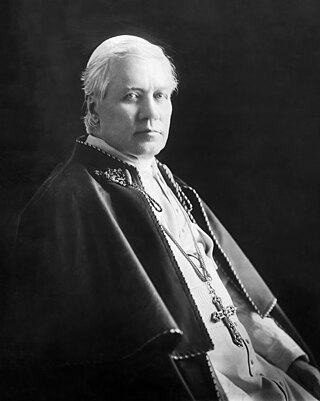
Pope Pius X was head of the Catholic Church from 4 August 1903 to his death in August 1914. Pius X is known for vigorously opposing modernist interpretations of Catholic doctrine, and for promoting liturgical reforms and scholastic theology. He initiated the preparation of the 1917 Code of Canon Law, the first comprehensive and systemic work of its kind. He is venerated as a saint in the Catholic Church. The Society of Saint Pius X, a traditionalist Catholic fraternity formed decades after his death, is named after him.

The Franciscans are a group of related mendicant religious orders of the Catholic Church. Founded in 1209 by the Italian saint Francis of Assisi, these orders include three independent orders for men, orders for nuns such as the Order of Saint Clare, and the Third Order of Saint Francis open to male and female members. They adhere to the teachings and spiritual disciplines of the founder and of his main associates and followers, such as Clare of Assisi, Anthony of Padua, and Elizabeth of Hungary. Several smaller Protestant Franciscan orders or other groups have been established since late 1800's as well, particularly in the Anglican and Lutheran traditions.

The dissolution of the monasteries, occasionally referred to as the suppression of the monasteries, was the set of administrative and legal processes between 1536 and 1541, by which Henry VIII disbanded Catholic monasteries, priories, convents, and friaries in England, Wales, and Ireland; expropriated their income; disposed of their assets; and provided for their former personnel and functions.
The Fraticelli or Spiritual Franciscans opposed changes to the rule of Saint Francis of Assisi, especially with regard to poverty, and regarded the wealth of the Church as scandalous, and that of individual churchmen as invalidating their status. The Fraticelli were declared heretical in 1296 by Boniface VIII.

Pio of Pietrelcina, widely known as Padre Pio, was an Italian Capuchin friar, priest, stigmatist, and mystic. He is venerated as a saint in the Catholic Church, celebrated on 23 September.

Joseph of Cupertino (Copertino), OFM Conv. (Italian: Giuseppe da Copertino; 17 June 1603 – 18 September 1663) was an Italian Conventual Franciscan friar who is honored as a Christian mystic and saint. According to traditional Franciscan accounts, he was "remarkably unclever", but experienced miraculous levitation and ecstatic visions throughout his life which made him the object of scorn. He applied to the Conventual Franciscan friars, but was rejected due to his lack of education. He then pleaded with them to serve in their stables. After several years of working there, he had impressed the friars so much with the devotion and simplicity of his life that he was admitted to their Order, destined to become a Catholic priest, in 1625.

The Order of Friars Minor Conventual is a male religious fraternity in the Catholic Church and a branch of the Franciscan Order. Conventual Franciscan Friars are identified by the affix O.F.M.Conv. after their names. They are also known as Conventual Franciscans or Minorites.
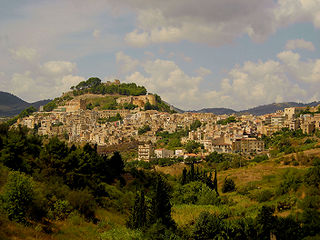
Calatafimi-Segesta, commonly known as simply Calatafimi, is a small town in the province of Trapani, in Sicily, southern Italy.

The Parish Basilica of Santa Maria del Popolo is a titular church and a minor basilica in Rome run by the Augustinian order. It stands on the north side of Piazza del Popolo, one of the most famous squares in the city. The church is hemmed in between the Pincian Hill and Porta del Popolo, one of the gates in the Aurelian Wall as well as the starting point of Via Flaminia, the most important route from the north. Its location made the basilica the first church for the majority of travellers entering the city. The church contains works by several famous artists, such as Raphael, Gian Lorenzo Bernini, Caravaggio, Alessandro Algardi, Pinturicchio, Andrea Bregno, Guillaume de Marcillat and Donato Bramante.
In the Roman Catholic Church, Theologian of the Pontifical Household is a Roman Curial office which has always been entrusted to a Friar Preacher of the Dominican Order and may be described as the pope's theologian. The title was formerly known as the Master of the Sacred Apostolic Palace before the changes implemented in Pope Paul VI's 1968 apostolic letter Pontificalis Domus.

The Secular Franciscan Order is the third branch of the Franciscan Family formed by Catholic men and women who seek to observe the Gospel of Jesus by following the example of Francis of Assisi. Secular Franciscans are not like the other third orders, since they are not under the higher direction of the same institute. Brothers and sisters of the Secular Franciscan Order make a spiritual commitment (promises) to their own Rule, and Secular Franciscan fraternities can not exist without the assistance of the first or second Franciscan Orders. The Secular Franciscan Order was the third of the three families founded by Francis of Assisi 800 years ago.
Stathis Giallelis is a retired Greek actor. He won brief international renown in the early 1960s as the star of Elia Kazan's Academy Award-nominated epic America America, a role which brought him the Golden Globe Award for New Star of the Year – Actor, as well as a nomination for Golden Globe Award for Best Actor – Motion Picture Drama.

Francis Anthony Fasani was an Italian friar of the Order of Conventual Friars Minor who has been declared a saint by the Catholic Church.

The Shrine of St. Anthony is a Roman Catholic shrine honoring St. Anthony of Padua. The shrine is located within the St. Joseph Cupertino Friary in Ellicott City, Maryland, USA. The shrine is a ministry of the Conventual Franciscan Friars, Our Lady of the Angels Province, USA.
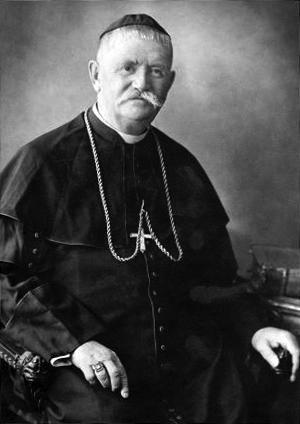
Alojzije Mišić was a Bosnian Croat Franciscan and prelate of the Catholic Church who served as the bishop of Mostar-Duvno and the apostolic administrator of Trebinje-Mrkan from 1912 until his death in 1942.
Joseph Petracca was an American novelist, short story writer, screenwriter, and television writer of Italian descent. Born and raised in Brooklyn, New York, Petracca moved to Los Angeles after the end of World War II and worked a series of full-time jobs, mainly as a steam press operator for a laundry and linen rental service, while he pursued his writing in the evenings and began raising a family with his wife Lena. In the early fifties Petracca began publishing fiction in the popular magazines of the day. Throughout the fifties Petracca wrote and collaborated on numerous films for such studios as 20th Century Fox and Paramount Pictures and in the sixties wrote episodes for such television shows as The Untouchables, Rawhide and Route 66. Petracca is survived by a daughter, Frances Petracca, a neuroscientist and AIDS researcher, and a son, novelist and university Lecturer Emeritus Michael Petracca.

Padre Pio: Miracle Man is a 2000 Italian television movie directed by Carlo Carlei. The film is based on the book Padre Pio: Man of Hope by Renzo Allegri and it depicts real life events of Roman Catholic friar and later Saint Pio of Pietrelcina. The film was presented in two parts. The first part aired on 17 April 2000 while the second part aired on 19 April 2000.
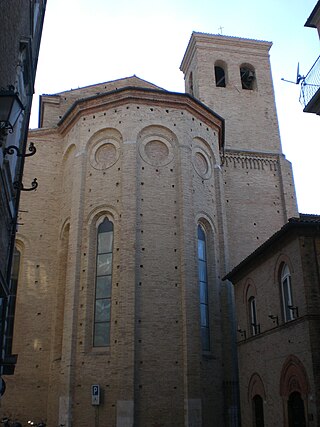
San Giuseppe da Copertino is a Roman Catholic basilica church in the town of Osimo, region of Marche, Italy.
